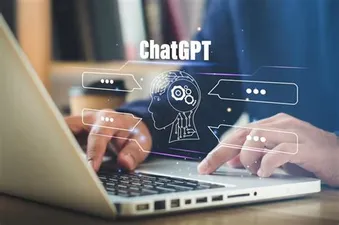
Last week, Open AI released their advanced and updated language model GPT-4 which hit the industry like a storm. The rapid development of artificial intelligence has led to incredible advancements in language models like GPT-4 and ChatGPT. These powerful tools are transforming industries and empowering individuals in unprecedented ways.
Let’s dive into the world of GPT-4, explore its impact on businesses and individuals, and discuss the differences between ChatGPT and GPT-4.
Evolution of GPT Models
• History of GPT models
The journey of GPT (Generative Pre-trained Transformer) models started with the first iteration, GPT-1, which showed promise in natural language understanding and generation. GPT-2 made significant strides in generating coherent and contextually relevant text, while GPT-3 & 3.5 amazed the world with their versatile and creative applications. Now, GPT-4 continues to push the boundaries of what AI can achieve.
• Advancements and
Innovations in GPT-4
GPT-4 brings improvements in processing power, scalability, and fine-tuning capabilities. With an even larger dataset, GPT-4’s language understanding and generation abilities have reached new heights, enabling it to tackle complex tasks with ease.
Revolutionising Businesses with GPT-4
• Enhanced NLP
Capabilities
GPT-4’s advanced natural language processing capabilities have opened up new possibilities for businesses. From customer support chatbots that offer a seamless user experience to AI-driven content creation for marketing, GPT-4 is transforming the way businesses interact with their customers.
• Improved Data Analysis and Decision-Making
GPT-4’s ability to analyse large amounts of data and generate valuable insights makes it a game-changer for businesses. Market research, trend prediction, risk assessment, and management can now be done faster and more accurately, leading to better decision-making.
• Automation and
Inreased Efficiency
By automating routine tasks and optimising workflows, GPT-4 enables businesses to allocate resources more effectively and increase overall efficiency. From document generation to scheduling, GPT-4 is revolutionising the way businesses operate.
Empowering
Individuals
with GPT-4
• Personalized learning and skill development
GPT-4’s adaptability makes it an excellent tool for personalised learning and skill development. Adaptive learning platforms and language learning apps can now provide tailored experiences for users, making learning more engaging and efficient.
• Creative Expression and Problem-Solving
From writing assistance to idea generation, GPT-4’s creative potential empowers individuals to express themselves and solve problems in innovative ways. The AI can offer suggestions, create drafts, and even help with brainstorming, making the creative process more enjoyable and fruitful.
• Enhanced Accessibility and Inclusivity
GPT-4 is breaking down barriers by offering assistive technologies for people with disabilities and democratising access to information and resources. Its advanced natural language understanding capabilities can be used to develop tools that improve the lives of countless individuals.
Understanding the Differences between ChatGPT and GPT
• Purpose and application
While both ChatGPT and GPT-4 excel in their respective domains, their applications differ. ChatGPT focuses on providing high-quality, human-like conversation experiences, whereas GPT-4 is designed to handle a wide array of NLP tasks.
To put it simply, ChatGPT is a conversational AI that operates based on a language model, such as the GPT series, which includes GPT-4. The primary goal of ChatGPT is to engage users in human-like, interactive conversations while demonstrating a deep understanding of the context and nuances of natural language.
• Model Architecture and Training
Despite sharing the same foundation, ChatGPT and GPT-4 differ in terms of architecture, dataset, and training techniques. These differences lead to variations in performance, capabilities, and limitations.
ChatGPT is fine-tuned specifically for conversational AI, while GPT-4 leverages a more extensive dataset to cater to a broader range of language processing tasks.
• Ethical Considerations and Responsible AI Development
As AI continues to advance, addressing ethical concerns and promoting responsible development becomes paramount. Both ChatGPT and GPT-4 are subject to biases and potential misuse, and developers must remain vigilant in addressing these issues.
Privacy and data security concerns are also crucial considerations, as the use of AI increases in various aspects of our lives.
Usage of ChatGPT
OpenAI provides the ChatGPT web-based interface, available at https://chat.openai.com/, where you can access different GPT models, including ChatGPT, and interact with them directly without using the API.
• How to use the ChatGPT web interface:
1. Navigate to the ChatGPT website: Visit https://chat.openai.com/ and log in or sign up for an account. ChatGPT is free to use with limited capacity for users.
2. Select a model: If you want to use the GPT-4 model, you have to upgrade your account to ChatGPT Plus (cost $20 per month). Choose the GPT model you’d like to interact with, such as ChatGPT or other GPT models that may be available.
3. Type your input: Enter your prompt or question in the text box provided and press enter.
4. View the response: The model will generate a response, which will be displayed on the screen. You can continue the conversation by typing more messages, and the AI will respond accordingly.
How to use GPT-4 API
To use GPT-4 API, you have to wait for the access. You can apply for the waitlist here: https://openai.com/waitlist/gpt-4-api
Conclusion
The arrival of GPT-4 has sparked a new wave of AI-driven innovations, revolutionising businesses and empowering individuals in remarkable ways. While ChatGPT and GPT-4 share a common foundation, their focus and applications differ, with ChatGPT specialising in conversational AI and GPT-4 excelling in a broad range of NLP tasks.
By understanding their unique features and differences, we can harness their potential to shape the future of AI and make a lasting impact on
the world.
Abhishek Anand is the founder of Skill Bud Technologies Pvt. Ltd. He is also an author, speaker and mentor.